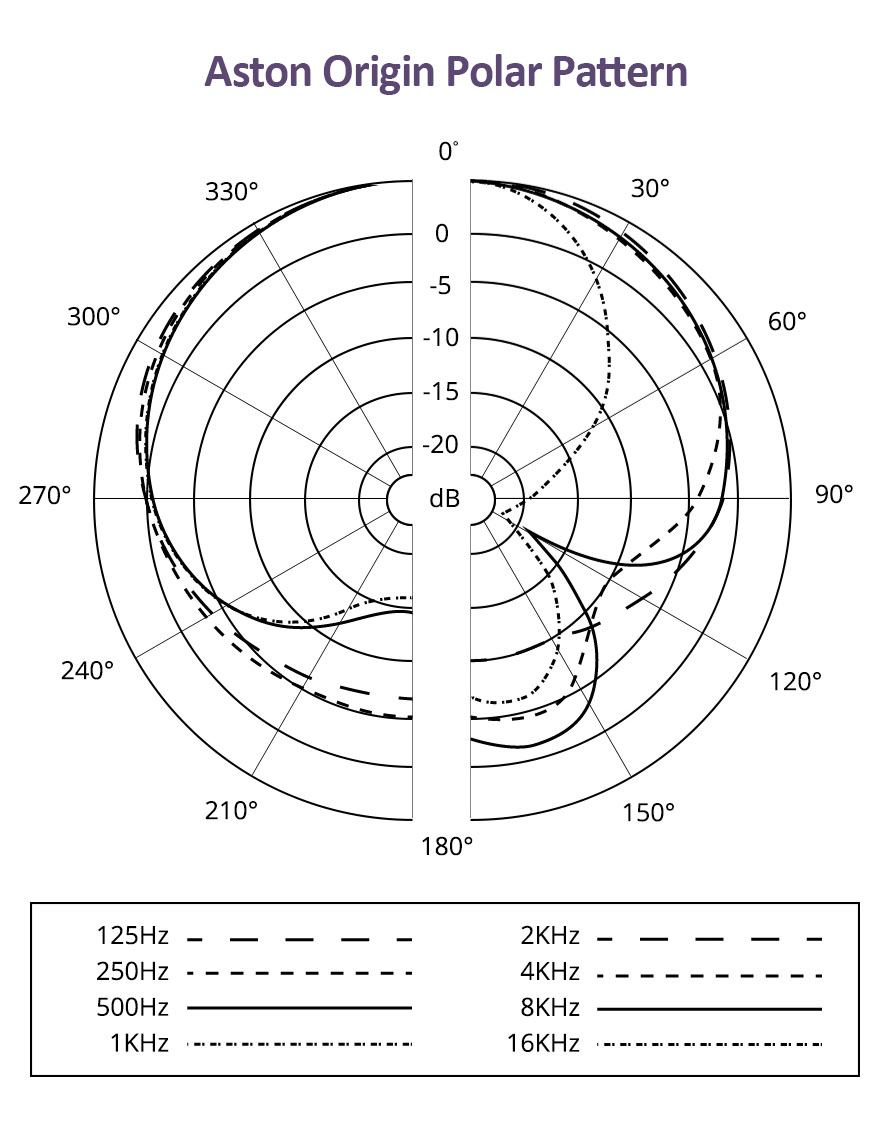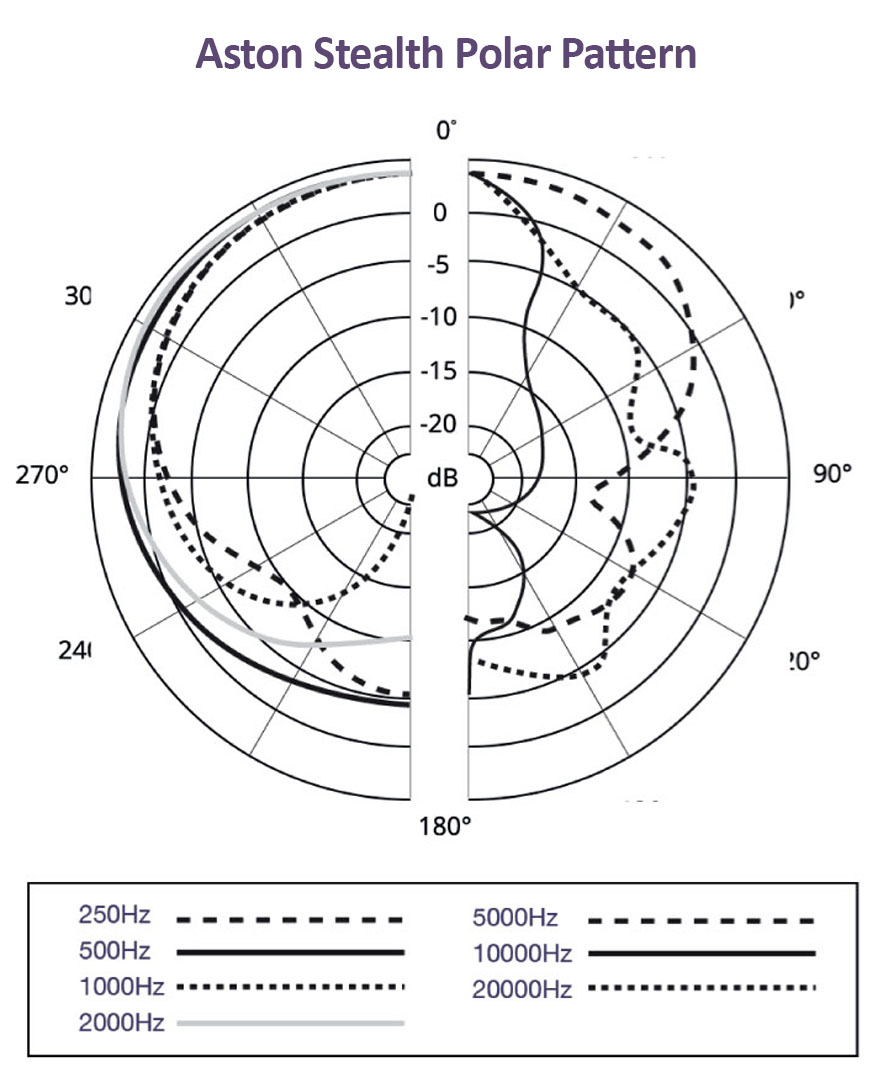What is a microphone’s polar pattern?
Categories :
A graphical representation of the directions from which a mic can capture sound from is known as its polar pattern. These take their names from the shape the pick-up area makes when plotted on a graph, showing a mic’s coverage when viewed from above. The most frequently encountered are cardioid (heart-shaped), figure of eight (front and back of the mic) and omni (where a mic can pick up sound from every direction).
 This example shows the cardioid pattern of the Aston Origin, with 0°, at the top, representing the front of the mic. The graph is plotted for a range of different frequencies and to avoid a cluttered diagram only the left or right half of each curve is shown – each would be symmetrical if fully displayed. The circles radiating from the centre show, in 5 decibel increments, the mic’s ability to capture sound in any given direction.
This example shows the cardioid pattern of the Aston Origin, with 0°, at the top, representing the front of the mic. The graph is plotted for a range of different frequencies and to avoid a cluttered diagram only the left or right half of each curve is shown – each would be symmetrical if fully displayed. The circles radiating from the centre show, in 5 decibel increments, the mic’s ability to capture sound in any given direction.
In practical terms this means a cardioid mic (like Origin, Element or Stealth) picks up sound mainly from the front (known as ‘on-axis’), less so from the sides (‘off axis’) and very little from the back. This focus on the sound source facing the mic makes cardioid the most widely used pattern for vocal recordings and for many solo instruments.
 The more directional a mic is the less off-axis sound it collects (known as its ‘off-axis rejection’) and this can be useful for isolating a sound source without interference from the surroundings. Aston Stealth, for example, has excellent off-axis rejection, meaning it can produce great results even in less-than-ideal acoustic environments. As Stealth’s graph shows, this rejection is more pronounced on the higher frequencies (the higher the frequency the more directional the sound, which is why those bass notes get everywhere!).
The more directional a mic is the less off-axis sound it collects (known as its ‘off-axis rejection’) and this can be useful for isolating a sound source without interference from the surroundings. Aston Stealth, for example, has excellent off-axis rejection, meaning it can produce great results even in less-than-ideal acoustic environments. As Stealth’s graph shows, this rejection is more pronounced on the higher frequencies (the higher the frequency the more directional the sound, which is why those bass notes get everywhere!).
Aston Spirit has selectable polar patterns, so in addition to cardioid, you can also choose figure of eight and omni.
Figure of eight captures sound evenly from the front and back of the mic, useful for recording two voices at once and also for stereo applications when using two mics (for example Mid/Side Stereo Recording).
Omni captures sound from all round the mic, great for a group of vocalists, as Jamie Cullum demonstrates in the video below. Omni is also useful for ambient recording, drums and for natural recordings in interior spaces.